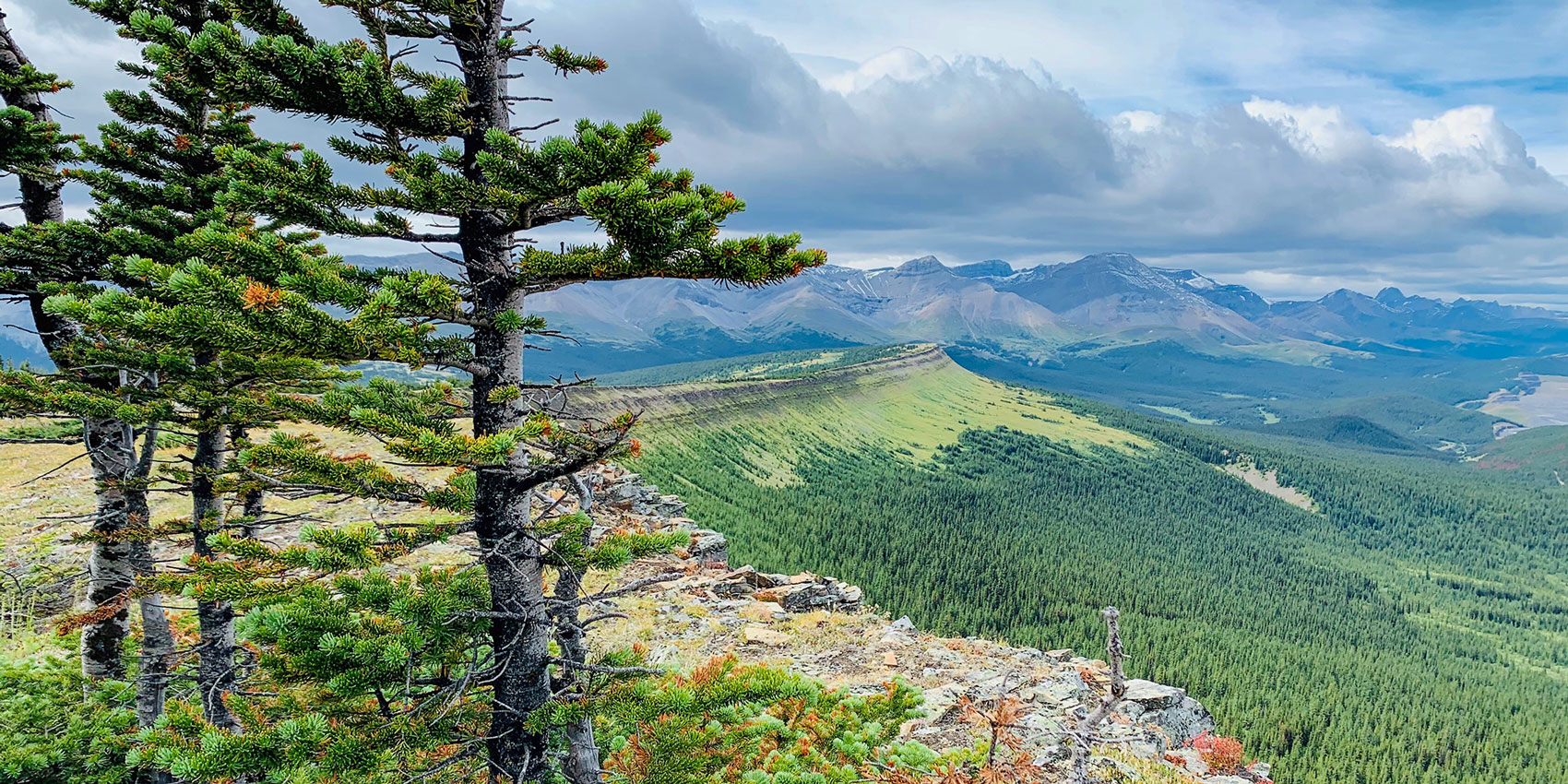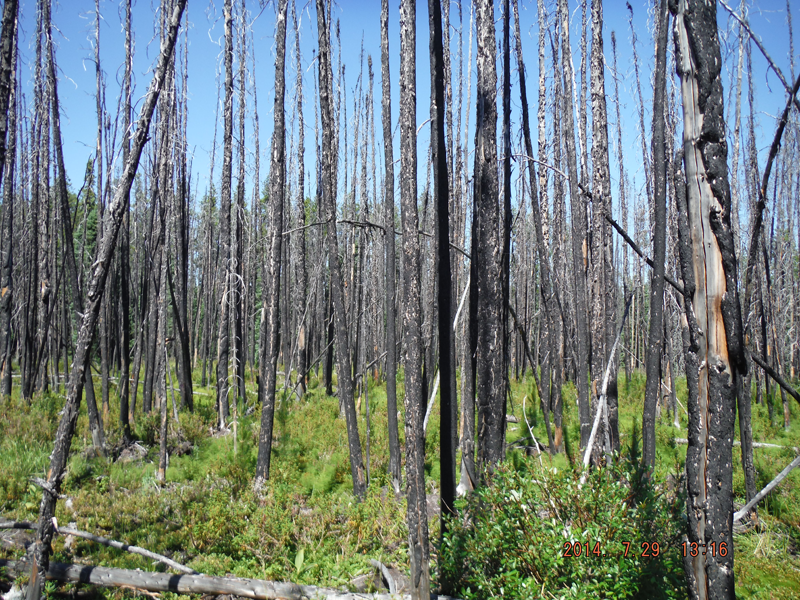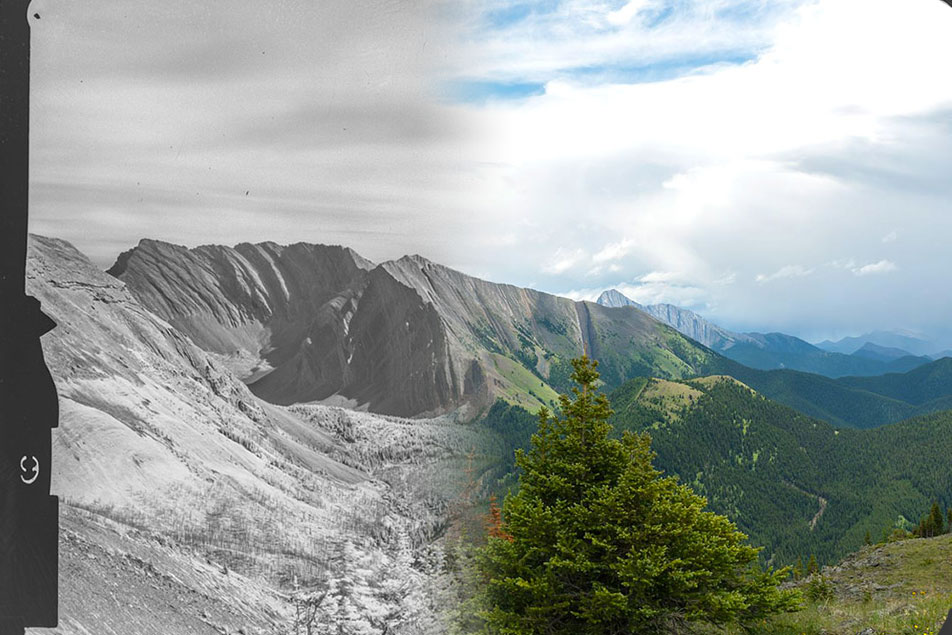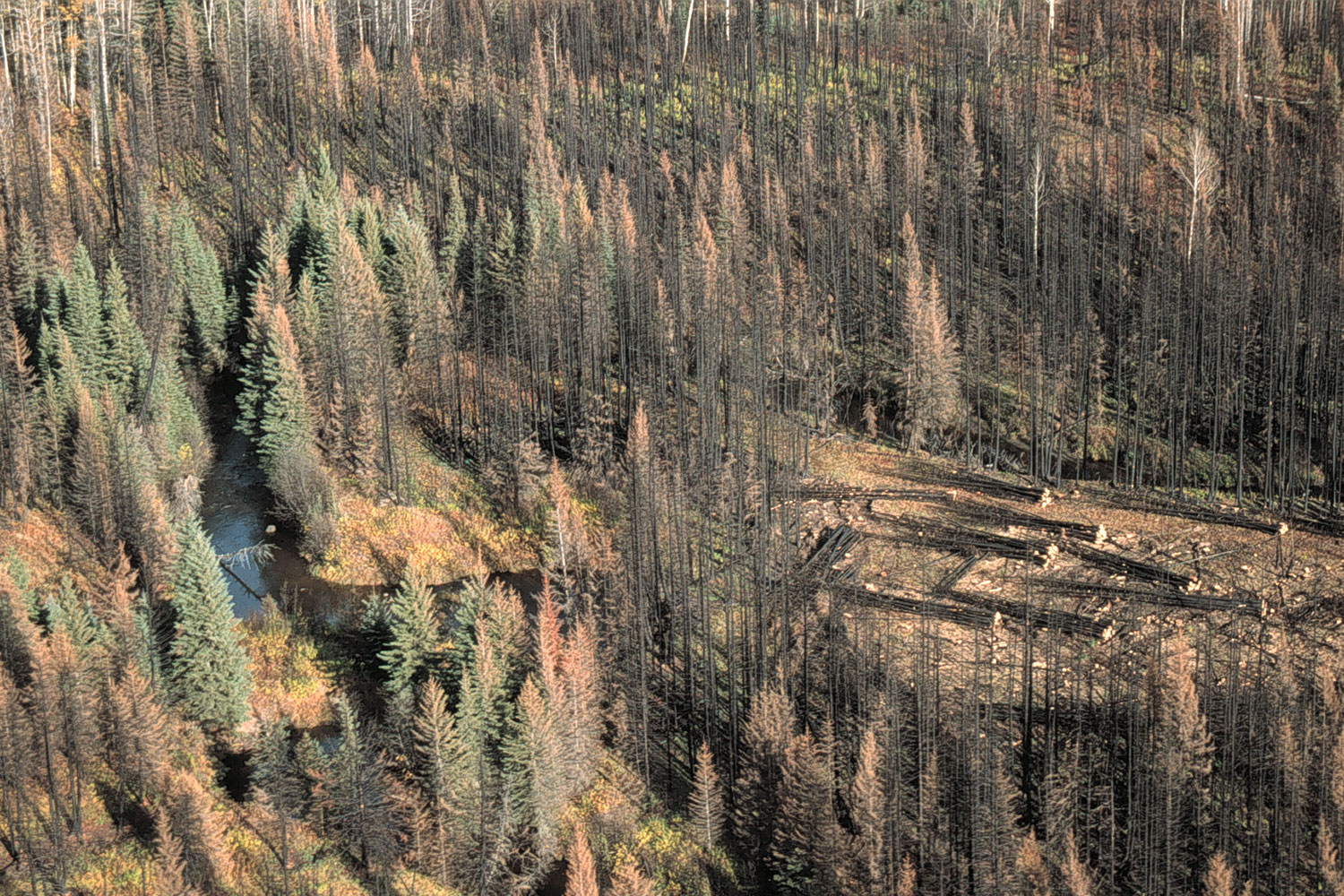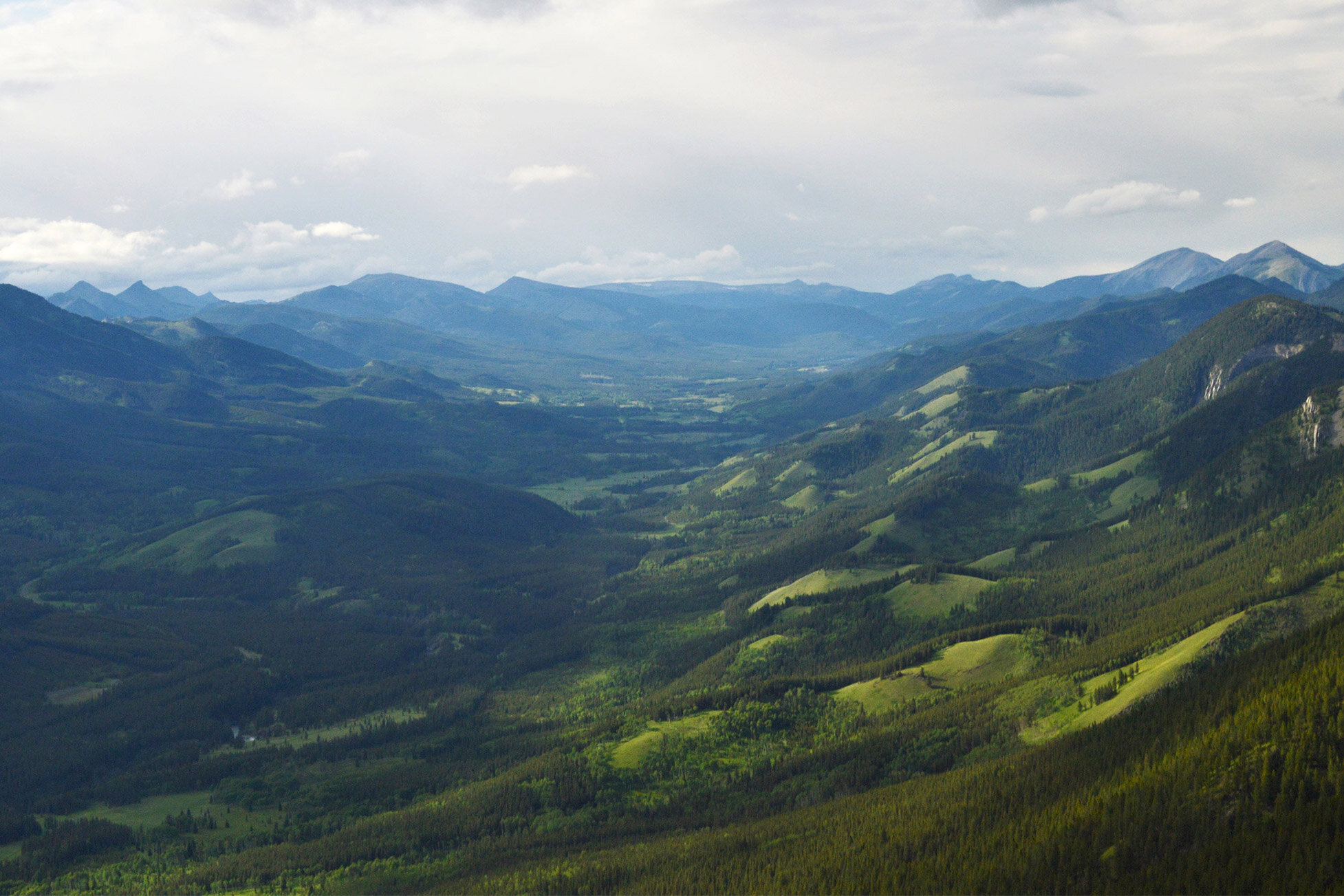On Thursday, Oct. 22, 2020 from 12:00–4:30 PM (Mountain Time) the Landscapes in Motion team of researchers shared the final findings of their research and discuss their implications through a series of presentations, Q&As, breakout sessions, and a panel discussion. They also discuss next steps that are envisioned, planned, or already underway to take this research even farther.
Fire Regime Team
Tree rings, counted painstakingly under a microscope, reveal the year a tree sprouted. Black scars on a tree’s bark tell of a fire that was survived, while fallen and standing dead trees tell of a fire that was not. The more trees we sample, the better we understand the story of the forest as a whole. Aerial photos from 1950 hint at a forest’s origin by showing how even, or uneven, the tree canopy was. Even-aged forests are often born in the years following hot, deadly fires. Less severe fires leave behind many survivors, forming patches of tall, old trees surrounded by the young.
Lori Daniels and Cameron Naficy present, “Re-imagining Foothills Forests: Young, Complex and in Flux.”
Oblique Photo Team
A hundred years ago, intrepid surveyors hiked into the backcountry and captured stunning photos of mountain vistas. For this project, our team walked in their footsteps and stood in the exact same spots, capturing photos that matched exactly. But what if these photos don’t match? By analysing these photos side-by-side, our team is putting together a picture of what has changed… and why.
Eric Higgs and Mary Sanseverino present, “A Lens into Past Landscapes and Fire Regimes.”
Modeling Team
Tree rings, fire scars, and historical photos… these are all pieces of the landscape’s story, and our modelling team’s task is to figure out how they fit together. It’s not enough to know when and how a forest burned—we want to know why and what comes next. How did climate affect a wildfire’s pattern? What about an insect outbreak, or the hills and valleys of the terrain? How did shrubs, trees, and understory plants grow back to create the forests we know and value today? Our team is using cutting-edge technology to illuminate the connections driving landscape change.



